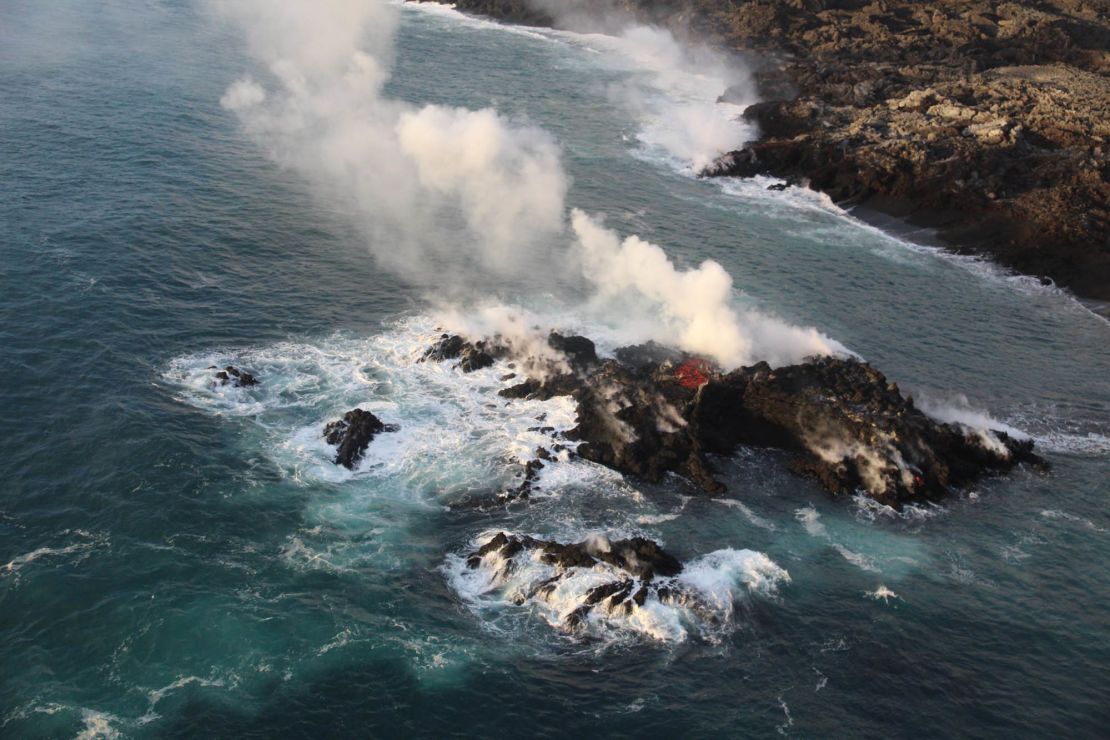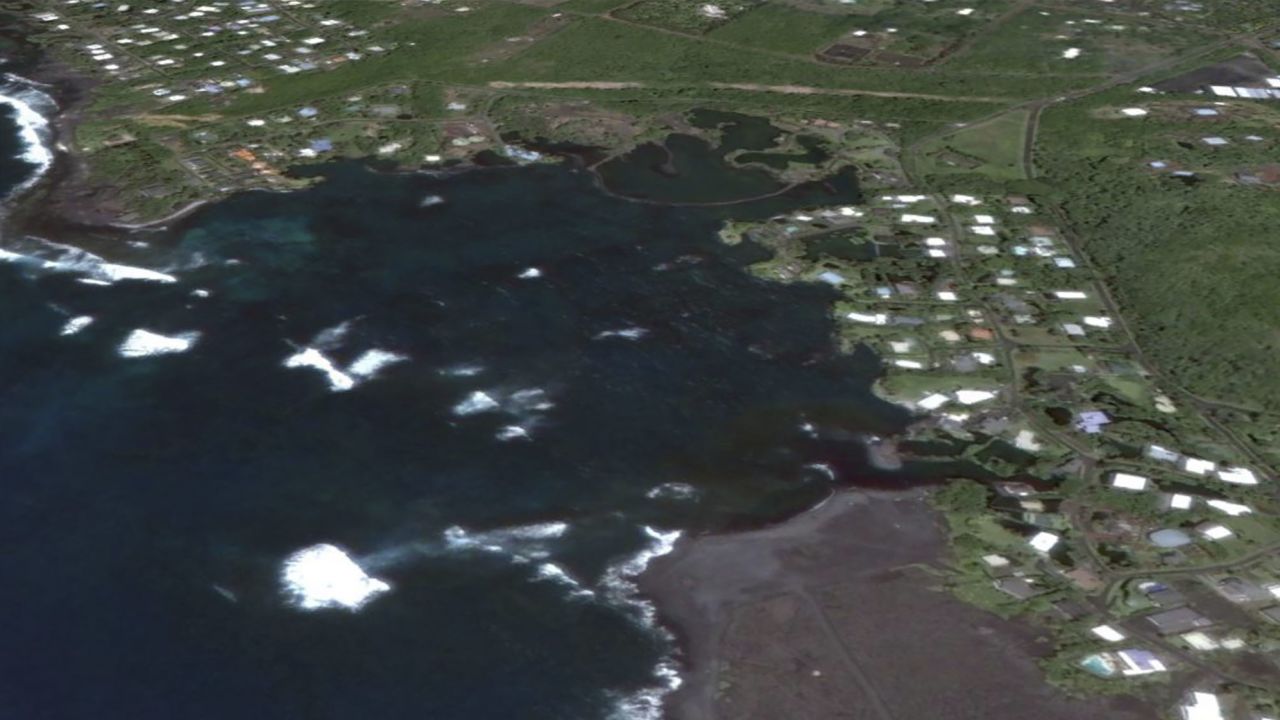Since early May, a stream of frequent eruptions and thousands of earthquakes have hit Hawaii’s Big Island. Lava has engulfed neighborhoods and homes.
And more than two months later, the Kilauea volcano is still erupting.
Kilauea has been active since 1983, with 61 USGS-recorded eruptions. It’s one of the most active volcanoes in the world, and for the past few months it’s been in a period of heightened activity.
On Monday, a lava bomb – a flying chunk of molten rock – struck a tour boat, injuring 23 people. Thirteen of the injured were treated at the hospital, and at least one woman was in serious condition, authorities said.
Here’s a look at how the volcano has been affecting the area over the past few months.
Neighborhoods have been overrun by lava
So far, 706 homes have been destroyed, according to the Hawaii County Civil Defense Agency.
Rivers of lava blazed paths into neighborhoods, swallowing homes and burying them in what now looks like a sea of black. In the communities of Vacationland and Kapoho, lava decimated hundreds of homes.
The volcano has caused two dozen fissures to crack the Earth’s surface open, purging fountains of lava and dangerous sulfur dioxide. Jagged cracks emerged on critical roads and even under homes, rendering them uninhabitable.
About 12.5 square miles of land have been covered with lava since the eruption began more than two months ago, the Hawaii County Civil Defense Agency says.
Residents are stressed about housing and their businesses
Mandatory evacuations are still in place for residents of Leilani Estates, according to CNN affiliate KHON. The community of about 1,500 people has been besieged by earthquakes, fissures and lava eruptions.
Residents in affected areas have had to stay at the two shelters open to lava evacuees or find other places to stay. About 20 microshelters, consisting of tiny homes in Pahoa, were built for residents displaced by the lava, reported KHON.
Some evacuees who’ve been able to return to their homes have been frustrated to find that looters have ransacked them in the weeks they’ve had to stay away.
Nat Tomaselli, a longtime resident, told CNN affiliate Hawaii News Now that he returned to find that his furniture, refrigerator, bedroom sets and even his solar panels had been stolen. He had to evacuate when the lava crept close to his property several weeks ago.
“I can’t believe they did this,” Tomaselli told the station, through tears. “They tore my place apart. I’m missing all my beds.”
Many of the residents have also been grappling with loss of income, as their businesses and farms have been disrupted by the eruption.
The lava has added new land to the Big Island

The lava has already physically changed the Big Island in several ways. The lava flow has added 690 acres of new land, USGS tweeted.
Part of the lava flow extended underwater away from the coastline, creating a tiny new island, the United States Geological Survey said. The agency thinks underwater pressure pushed the lava flow to the surface.
In June, lava completely filled Kapoho Bay – shocking residents and visitors who had frequented the area for its tide pools, snorkeling and picnics. The scenic bay that had been dotted with beach homes and lush greens had turned into a dark slab of steam and lava. Now the lava flow extends from what used to be the bay, in what is now a 3.7 mile wide flow into the ocean.
Also in June, the lava flow evaporated Hawaii’s largest freshwater lake within a few hours. Green Lake, which had been a popular swimming spot that had once reached about 200 feet deep, is now filled with lava.
CNN’s Artemis Moshtaghian contributed to this report.





















